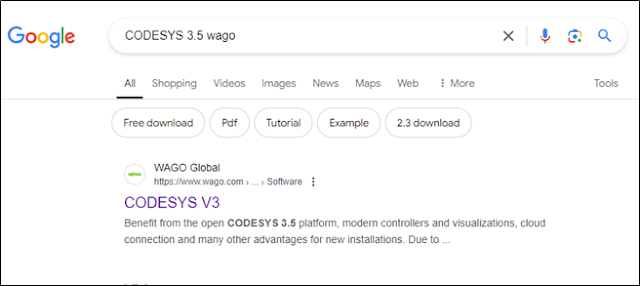Step 1: Search for Codesys v3.5 in any
search engine.
Step 2: When you click on the link, it redirects you to following page. Click on the download button. It will redirect you to a new webpage with Codesys v 3.5 descriptions.
![]()
Step
3:
Click on Open Page link, which open a new webpage.
Step 5: Click on Codesys 3.5 setup file to initiate installation.
Once installation is complete, launch the Codesys to check if installation is correct.
After this, you have to
install Wago Licensing, Wago Solution Builder, Wago codesys Download Server,
Wago Device and Libraries which are downloaded in Step 4 as a bundle.
Step
6:
Again Launch Codesys 3. Create a New Project from Basic Operations.
Create a standard project
and then choose suitable Name and Location where you want to save the project
file.
Once done, you have to
select the Device and Programming Language from drop down menu.
I have selected 750-8212
as my PLC device and Ladder Logic Diagram as my programming language. You will
see the device list only if Wago Device and Libraries are properly installed.
Selected
target system is different from the connected device
Once you connect a Wago
PFC 750-8212 device with PC and develop a ladder program, you will have to
download the program into the PLC.
In some cases, it may
display “selected target system is
different from the connected device” error message. This happens due to
firmware incompatibility between the codesys wago device library and PLC
firmware. The user will have to update the firmware of the device in that case.
PLC
Firmware update
![]()
In the softwares downloaded in Step-1, you will find Firmware also which needs to be uploaded to the PLC. The firmware can be uploaded using Wagoupload. WAGOupload is a stand-alone PC software for transferring, backing up and restoring PLC applications on WAGO 750 Series controllers.













